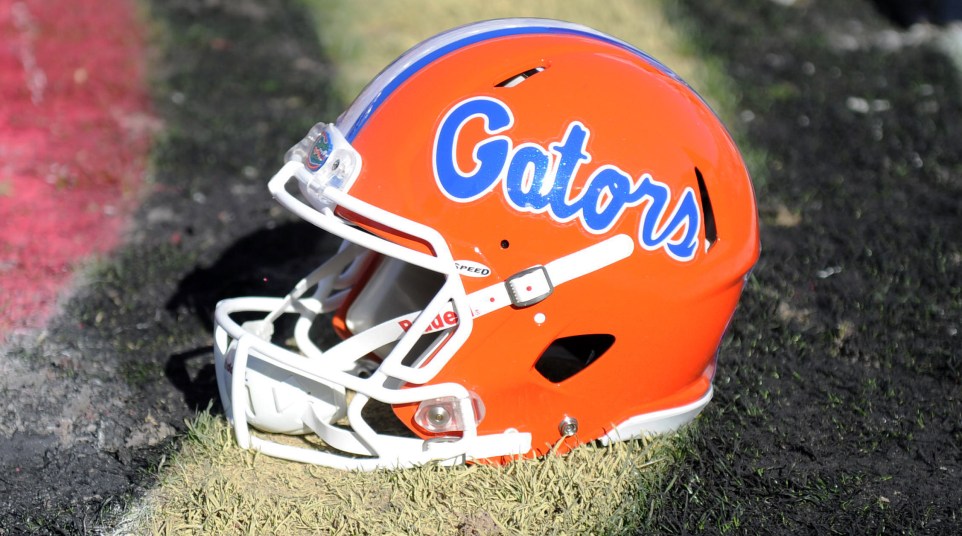Projecting Jordan Scarlett's impact at Florida in 2015
If you’re a fan of high-powered offenses, the Florida Gators were not your team the last two seasons. The Gators ranked 96th in the FBS in total offense a year ago, and ranked 115th the year before.
They only won 11 of 24 games those two seasons, failed to reach a bowl game in 2013 for the first time in 27 years, and eventually head coach Will Muschamp was fired in large part for his inability to find production on the offensive side of the ball.
The Gators hired offensive-minded Jim McElwain as their new head coach, hoping to return to their winning ways by building their offense back into the juggernaut it once was. However, McElwain only had about two months to recruit this winter, so fans may have to wait another year for those offensive reinforcements to arrive.
McElwain did manage to sign the nation’s top offensive tackle in Martez Ivey, and it’s expected that Ivey will start right away along a depleted Florida offensive line. He also managed to sign two four-star tailbacks and a four-star athlete in hopes that one of the three will provide some playmaking ability on offense this fall.
Among those three new weapons, its Jordan Scarlett, the No. 12 tailback in the entire class, who will be expected to carry a heavy burden as a true freshman in 2015.
Scarlett, an in-state prospect from proven football factory St. Thomas Aquinas, could have signed anywhere he wanted during the past recruiting cycle, holding offers from established powers like UF, Florida State, Georgia and others. He elected to sign with McElwain and the Gators, the program in which he could make the most immediate impact. McElwain, a former Nick Saban assistant at Alabama, sold Scarlett on the work he did with Mark Ingram and Trent Richardson, and that’s all Scarlett needed to hear.
So what’s working for Scarlett now that he’s officially a Gator? Well, his savvy as a tailback will continue to benefit him in the FBS just as did throughout his high school career. He is sturdy, but certainly not a large back standing 5-foot-11 and 205 pounds. He has speed, posting one of the fastest 40-yard dash times at a Nike camp in Miami during his recruitment, but he’s not the fastest back in the country.
But what Scarlette does well makes up for all of that. He explodes through holes and can be tough to bring down once he’s at full-speed. He’s not the shiftiest runner in the open field, but he takes fantastic angles as a runner that spoil the angles taken by opposing defenders hoping to corral him. He maintains impeccable balance as a runner, and has the ability to hit another gear when there’s green grass in front of him.
He’s not perfect, but what high school player is? Ultimately, he has the intangibles nearly every star tailback shares: balance, lane vision, explosiveness in the open field and an aggressive attitude. If he reaches his full potential, he could possess the skill set of a Richardson-Alex Collins hybrid, but again, that’s if he reaches his full superstar potential.
So what’s working against Scarlett? For starters, Florida’s starting back to open the year will be Kelvin Taylor, who split time in the backfield with Matt Jones a year ago and posted 565 yards on the year. Jones is now beginning a career in the NFL, and the starting job appears to be Taylor’s to lose.
Behind Taylor is Adam Lane, a freshman last year who began to emerge toward the end of the season. Lane has a chance to work his way into a tailback tandem with Taylor this season, but the addition of Scarlett may compromise that. However the backfield rotation stays as is, Scarlett is not going to get consistent work early in his career.
Florida more or less knows what it’s getting out of Taylor, and likely out of Lane as well: consistent runners with SEC experience but won’t push guys like Leonard Fournette and Nick Chubb atop the SEC leaderboard.
Scarlett has that 1,000-yard upside, but as a backup he’ll receive inconsistent touches, which can make finding a rhythm even more difficult for a player with no SEC experience. As a result, the incoming freshman may miss opportunities he’d otherwise take advantage of if given more consistent opportunities.
If he tries to force the issue to earn playing time, it’ll likely work against him. Scarlett is a supreme talent, but he needs to play to his strengths, not to outshine his teammates.
It also doesn’t help that Florida lost almost all of its starting offensive line from a year ago, leaving a disjointed collection of linemen to fill new roles on the fly around Ivey at left tackle. It’s not like Florida has an established quarterback and a potent passing game to balance the offense, either. The Gators still lack a starting quarterback for Week 1, and the offense is laughably one-dimensional, allowing defenses to focus on Taylor, Lane and now Scarlett.
So in ultimately trying to determine what kind of addition Scarlett can make this fall, it’s tough to gauge. He’s never been much of a pass-catcher (only 24 receptions in his first three high school seasons combined), but he has the ability to catch a pass and pick up a few yards in space. That’s one way he can make an impact.
But as a traditional tailback, his expected 1,000-yard campaigns may still be a year away with Taylor in the mix and little talent up front along the Gators’ offensive line.
Still, adding more talent and more playmakers is never a bad thing. Scarlett will show flashes of excellence this fall, and Florida fans should get excited about what he may bring to Gainesville during this rebuilding phase. As for 2015? Look for upside, not numbers, or you may find yourself feeling blue at season’s end.

